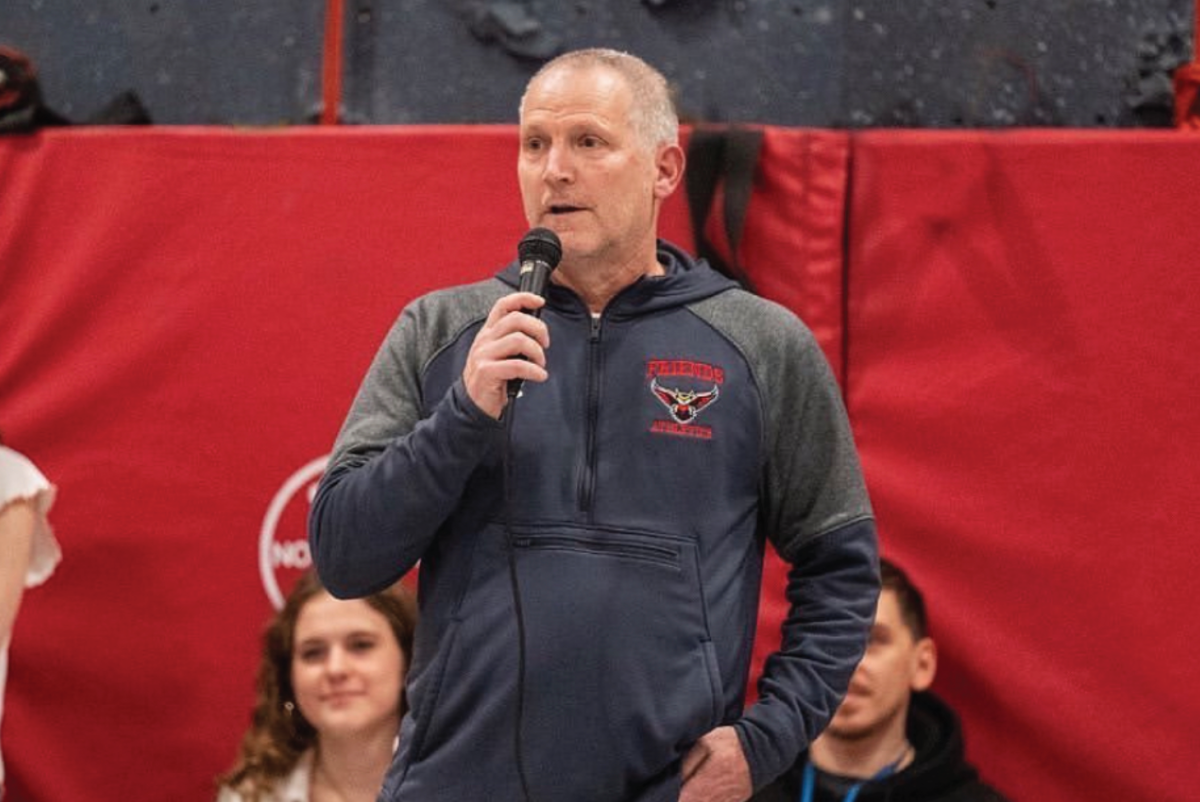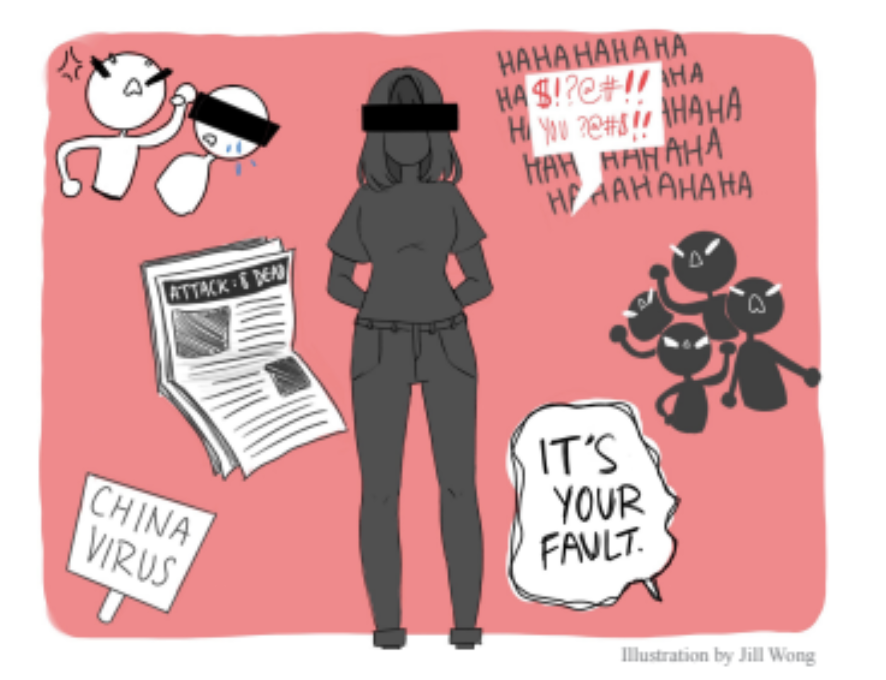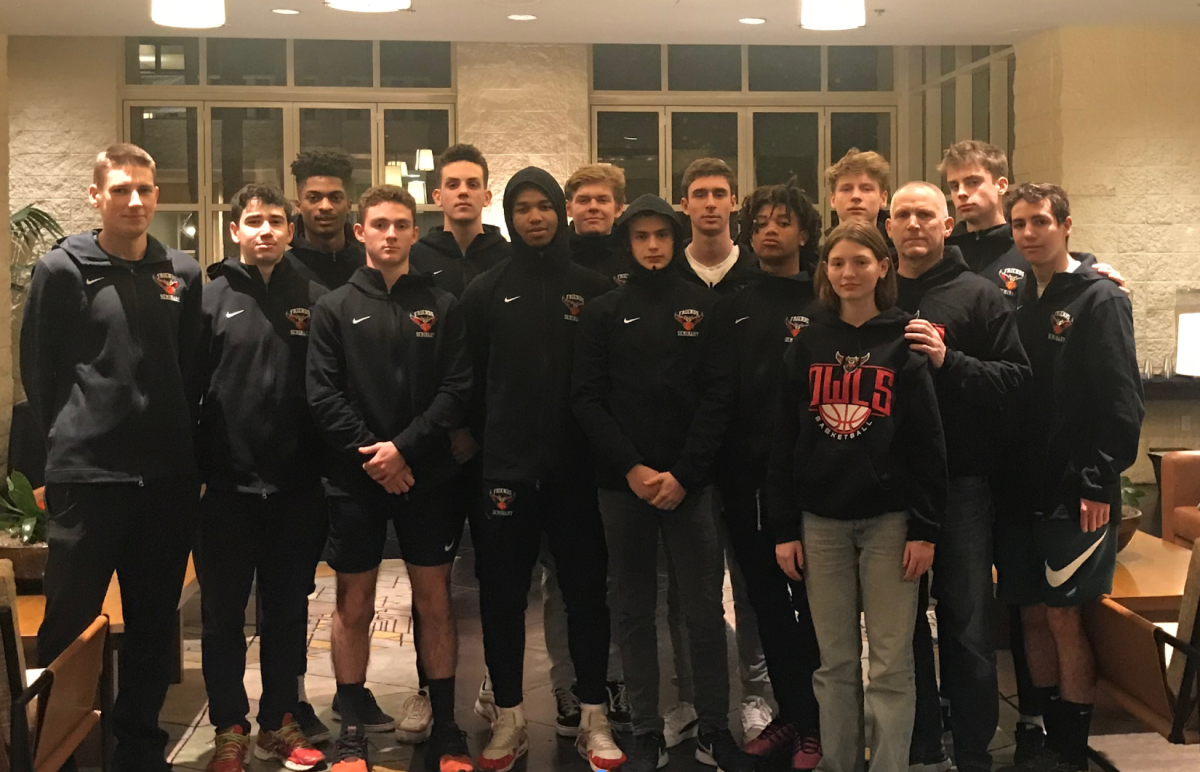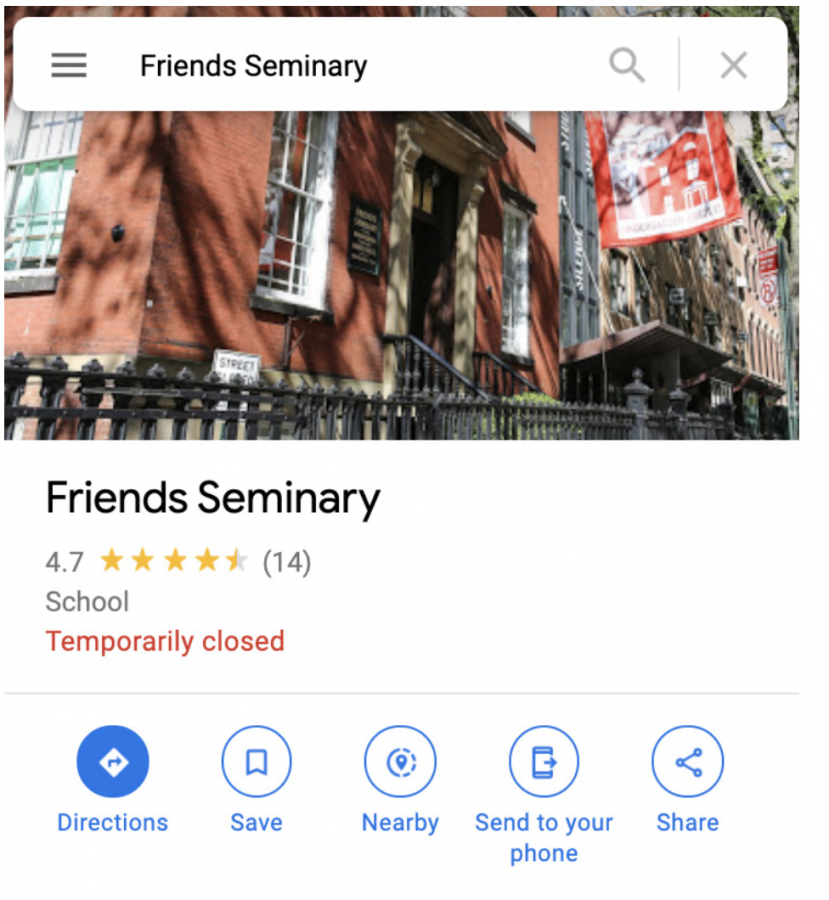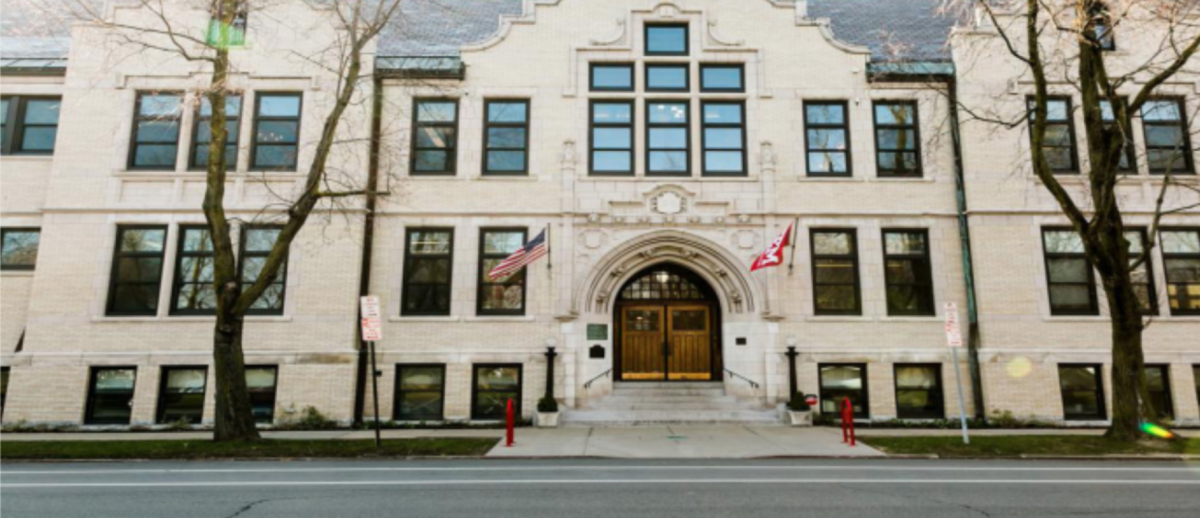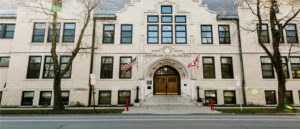Friends Seminary adjusts to distance learning
June 1, 2020
While students adapted to life away from 222 East 16th Street, the administration worked behind the scenes to move classrooms to computer screens. A team of faculty members grappled with how to bring teachers and students up to date on new software, change the grading system, accommodate and consider individual circumstances, and reimagine the entire fourth quarter. While time lost together will never be regained with digital fix-ups, Mr.Hassan Wilson, Assistant Head of Upper School, said he has been impressed with the community’s “willingness to go with the flow and be flexible.”
At the crux of difficult decisions as COVID-19 evolved was the technology department. They worked through spring break to find the optimal way to continue learning. Scott Adamson, Director of Institutional Technology, said he was grateful to learn from other schools’ challenges and successes while they continued troubleshooting over our spring break. After deliberation and analysis, the team decided to move forward with digital learning via Zoom, a video conferencing software.
The administration could only proceed, however, once every community member was equipped with a wireless connection and reliable technology. After those who needed support were sought out, Adamson and the technology team sent out hotspots and devices, and have continued to address repairs and tech requirements since. Adamson said the school’s unexpected closing meant “inventory is small,” and most of it is boxed up in his attic. “I’ve been running stuff to UPS as needed,” Adamson said. “Just to make sure that they [community members] can continue doing what they need to do.”
Adamson said that through tough decisions and nimble workarounds, the school has made learning work. “The school has been thoughtful and supportive of the families and the tech department,” He said. “They’re providing what they can to help people maintain and operate in this new way.”
The tech department is always available to support the community. “Technology is critical to your day-to-day, whether it’s just catching up with friends or, you know, doing your schoolwork,” Adamson said. “When something just doesn’t work, it gets really frustrating, really fast.” The technology department “understands that,” he said.
For teachers, learning to instruct online classes was a challenge even with the right technology. “Some teachers didn’t even know what Zoom was,” Mr. Wilson said. To prepare teachers for their new environment, professional development training was offered over spring break. To plan the fourth quarter without in-person class or the ability to administer traditional assessments, teachers dealt with a paradigm shift. Many changed the end-of-year workload altogether. AP teachers attempted to prepare students for an unprecedented online format. Lower and middle school teachers brainstormed ways to hold their students’ attention. Ultimately, Wilson said, “I’ve been impressed with [the teacher’s] willingness to be graceful, flexible, and to try new things.”
It had to be recognized that as a complication of digital learning and the impact of COVID-19 – which contribute to stress, aggravate mental health, affect loved ones, and introduce new responsibilities – the Friends community could not hold the same expectation of performance in the fourth quarter.
Acknowledging the nuances of the changing environment, the administration’s shifted to a pass or fail grading system. Year grades will now largely be a reflection of a student’s work from the first three quarters. Wilson said that they realized “teachers and students could not be at their best,” and that the complexity of the moment called for a uniform readjustment.
It was similarly important not to burden students with excessive screen time, Wilson said. Given that most homework assignments were going to be completed online, the administration decided to shift from an eight-day schedule to a four-day workweek. The change helped accommodate middle and lower school teachers and included a free day on Wednesday and a 9 a.m. start to address screen fatigue.
While Meeting for Worship was originally not considered after stories of “horrific intrusions on Zoom meetings” at other schools, Wilson said it entered the discussion after he successfully attended an online meeting elsewhere. Wilson said the administration eventually decided it was important to include the Quaker exercise and continue bringing the community together. “We were really worried about students feeling isolated or lonely,” so it was important to preserve a valued tradition that brings us together, he said.
To promote connectivity and encourage healthy discourse, the Center for Peace Equity and Justice (CPEJ) has also launched an initiative called ‘Some Good News,’ modeled after John Krasinski’s weekly report by the same name. On Wednesdays, CPEJ has brought in noteworthy speakers, such as healthcare workers on the frontline, practicing journalists, and authors. The meetings have covered topics such as Asian American Heritage, healthcare, philanthropy, and journalism, among other issues. CPEJ’s discussions have continued valuable conversation and also helped to bring the community together while we are apart.
Clubs have been encouraged to continue meeting after classes on Tuesday. The Debate Team, Food for Thought Club, and newspaper, among other student organizations, have continued to meet digitally. Club leadership and committee affirmations have continued via digital elections, and the confirmation and interview process for new clubs is continuing via Zoom.
Decisions made early on have been changed as administrators have received feedback. At the bidding of the agenda committee, parent and student letters, and in response to feedback taken from Advisory and class meetings, for example, Meeting for Worship and advisory changed from twice to once a week. A collaboration period to meet with teachers, and a period for class meeting and Meeting for Announcements, was added to the schedule. As the administration plans for the fall, Wilson said “we will continue to take feedback” from students that will inform their decisions.
Student success through distance learning has been varied. “There is a bell curve,” Wilson said. “Some students flourished before distance learning and are continuing to now,” and some did not thrive before distance learning and “are now flourishing.”
Wilson said the majority of students “are just doing the best they can.” A survey conducted by The Insight found that among 77 students surveyed, 48.7% had been able to keep up their best work, 10.5 % had improved, and 40.8% had become less productive away from school.
Wilson suggests that students struggling with distance learning be “kind to [themselves],” and accept when “maybe things take longer, or maybe you’re more tired than usual, or maybe you’re not as engaged as usual.”
“Give yourself the space to feel sad, to feel angry, to feel depressed,” Wilson said. But all the while, “have some perspective on what’s good about your situation – you know, you’re still alive, and you can go on Zoom and connect with people.”
While those sound like “opposing thoughts,” striking a balance, Wilson said, is critical.


